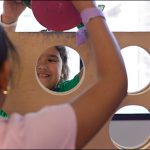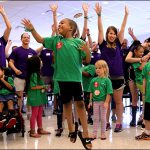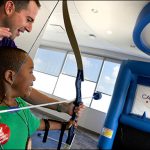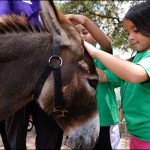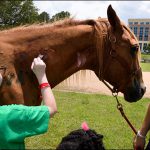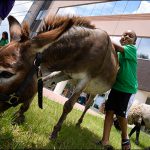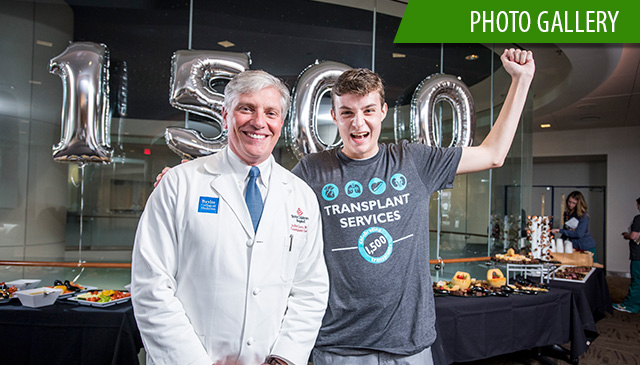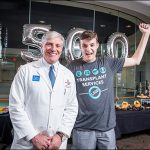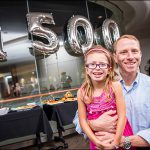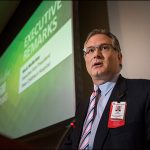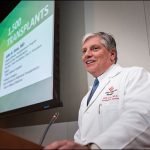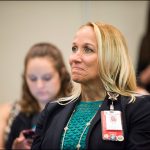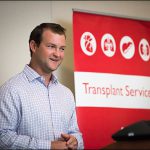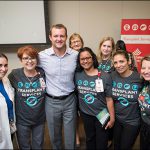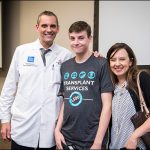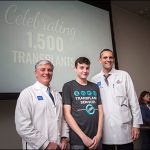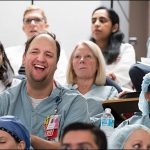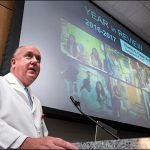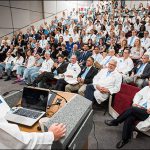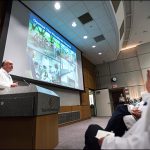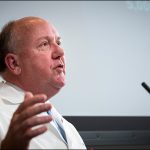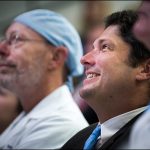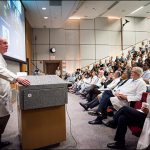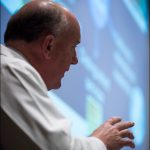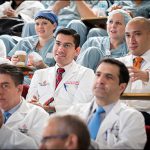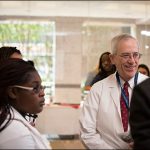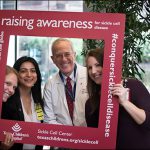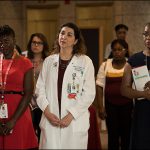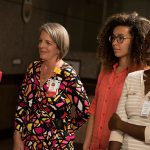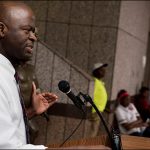August 8, 2017
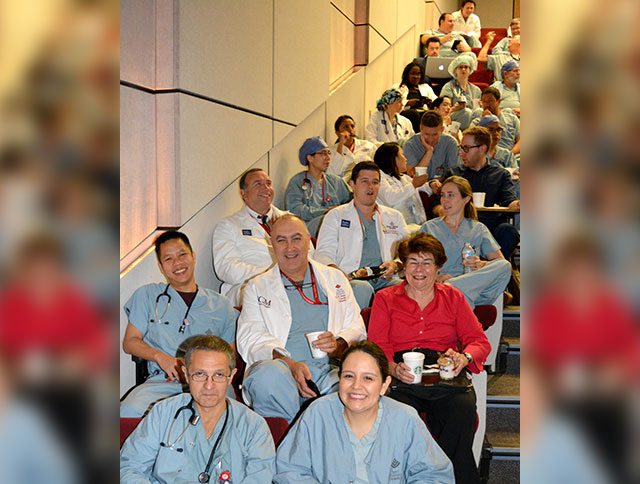 Texas Children’s is a large and growing health system with many specialties and sub-specialties. We take care of the sickest of the sick and provide routine pediatric care to otherwise healthy children. Many times that care involves not one medical expert but a team of medical experts, including pediatric anesthesiologist.
Texas Children’s is a large and growing health system with many specialties and sub-specialties. We take care of the sickest of the sick and provide routine pediatric care to otherwise healthy children. Many times that care involves not one medical expert but a team of medical experts, including pediatric anesthesiologist.
“The core role of the Department of Anesthesiology, Perioperative and Pain Medicine is to provide surgical anesthesia, but we are not just in the operating room,” Anesthesiologist-In-Chief Dr. Dean B. Andropoulos said. “We provide care in radiology, our Pain Medicine Clinic, in the Intensive Care Units, and at all three Texas Children’s Hospital campuses. We also are in the laboratory doing cutting edge research, writing some of the top textbooks in our field, and educating and training the next generation of pediatric anesthesiologists.”
During a recent Department of Surgery Grand Rounds, Andropoulos discussed the strategic goals of his growing department and how it touches almost every aspect of patient care.
The department’s 78 pediatric anesthesiologists represent the largest group of pediatric anesthesiologists in the country. All are board certified or are in the process of becoming board certified and all provide anesthetic care in almost 60 locations on a daily basis.
Across these locations, Texas Children’s anesthesiologists were involved in 43,456 cases last year, a 36 percent increase from the number of cases anesthesiologists participated in seven years ago. The majority of the cases worked last year, 68 percent, occurred in the operating room. The remaining 32 percent of cases happened outside the OR in various inpatient and outpatient settings.
“The fact that we do more than 40,000 anesthetics in a year lends to the level of expertise of our group,” said Medical Director of Perioperative Services Dr. Chris Glover. “I don’t know of another place where you can take your child to get the amount of expertise that exists here.”
This level of expertise was recently exemplified by the expansion of the Pre-Anesthesia Screening Service (PASS) Clinic to Texas Children’s Hospital West Campus and Texas Children’s Hospital The Woodlands. These clinics are involved in pre-anesthetic consultation and planning for patients with complex medical problems or who are undergoing complicated surgical procedures.
Patients are evaluated by anesthesiology nurse practitioners and anesthesiologists, and an anesthetic plan is developed that is communicated to parents, surgeons and procedural physicians. This planning leads to improved patient and family education, better outcomes and fewer delays and cancellations of surgery. This service emphasizes the increasing role of pediatric anesthesiologists as perioperative physicians whose expertise benefits patients all across the Texas Children’s system.
Being part of an academic center, Baylor College of Medicine, allows the Department of Anesthesiology, Perioperative and Pain Medicine to continue to strengthen and grow its already solid knowledge base, Andropoulos said.
In addition to providing top notch clinical care, the department’s clinical staff is involved in numerous clinical and basic science research protocols, many of which are funded by the National Institutes of Health.
Just last year, the department’s faculty published over 40 articles peer reviewed journals. They also served as editor and/or author of eight textbooks, including Anesthesia for Congenital Heart Disease, 3rd Edition. The textbook is the leading reference source for the field.
The department has taken a lead in educating anesthesiologists at Texas Children’s and beyond about the Federal Drug Administration’s recent warning that repeated or lengthy use of general anesthetic and sedation drugs during surgeries or procedures in children younger than 3 or in pregnant women during their third trimester may affect the development of children’s brains.
“Parents know we are up-to-date on the very latest information,” Andropoulos said. They also know we all are aware that taking care of their child is a privilege, a real responsibility that we take extremely seriously.”
Members of the Department of Anesthesiology, Perioperative and Pain Medicine are always striving to do better and have set out three primary strategic goals for the next few years. These goals are:
- To enhance patient experience by design and enhanced method of measuring anesthesiology patients satisfaction data.
- Expand pain services by creating a strong business model for the service line and engaging and strengthening collaborative partnerships with clinical specialties to increase access to care for pain patients.
- Increase research grant funding and resources by growing the volume of peer reviewed journal publications and grant proposals in the department and acquiring more funding from major grant proposals.
“We will continue to strengthen and grow our department,” Andropoulos said. “We want to remain one of the top pediatric anesthesiology programs in the country.”
Department leadership and contact information
- Anesthesiologist-In-Chief, Dr. Dean B. Andropoulos
- Associate Anesthesiologist-In-Chief Academic Affairs, Dr. Blaine Easley
- Associate Anesthesiologist-In-Chief Clinical Affairs, Dr. Emad Mossad
- Medical Director of Perioperative Services, Dr. Chris Glover
For more information about Texas Children’s Hospital Department of Anesthesiology, Perioperative and Pain Medicine, visit the department’s website at http://www.texaschildrens.org/departments/anesthesiology or call ext. 4-5800.
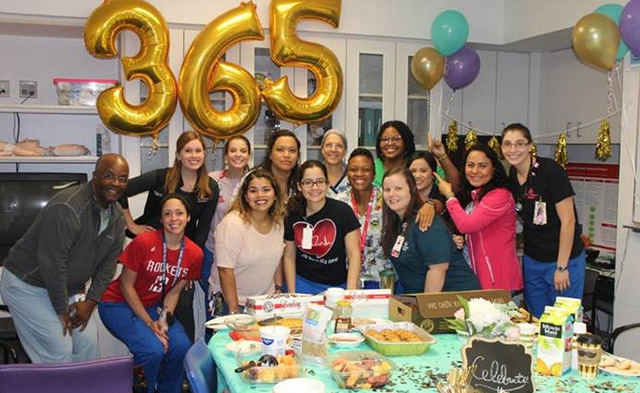 The Cardiology Patient Care Unit (CPCU) on 15 West Tower recently achieved a remarkable milestone – they reached 365 days and counting with zero central line-associated bloodstream infections (CLABSI).
The Cardiology Patient Care Unit (CPCU) on 15 West Tower recently achieved a remarkable milestone – they reached 365 days and counting with zero central line-associated bloodstream infections (CLABSI).




